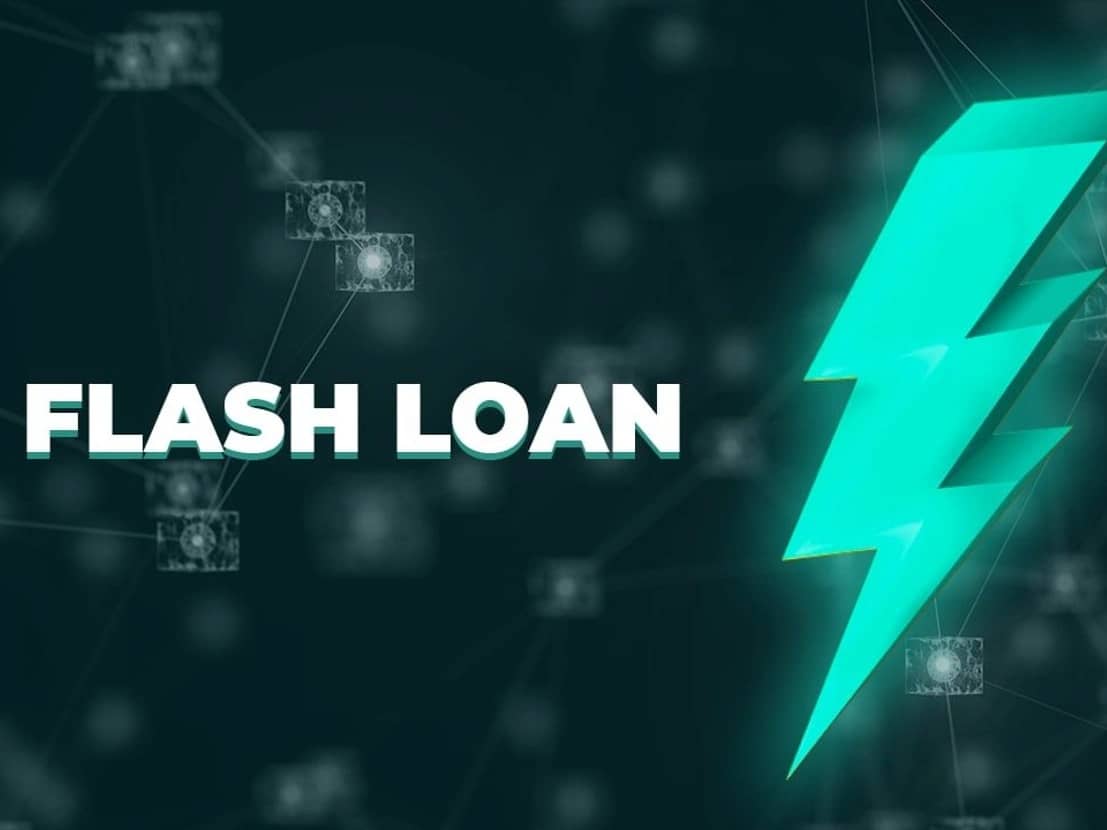订阅 wiki
Share wiki
Bookmark
Flash Loan
Flash Loan
闪电贷是一种去中心化金融 (DeFi) 借贷机制,可在区块链上使用,允许用户在没有前期抵押品的情况下借入资产,但前提是借入的资产必须在同一区块链交易区块内归还。[1]
历史
闪电贷最初由DeFi的先驱,开源银行Marble于2018年推出。它们于2020年1月通过开创性的去中心化借贷平台AAVE在以太坊网络上首次亮相。到同年7月,AAVE每天通常发放超过1亿美元的闪电贷。2021年6月,AAVE发放的闪电贷总额接近40亿美元。此后,这项创新在DeFi领域传播开来,AAVE迄今为止处理的最大一笔闪电贷约为2亿美元。[4]
闪电贷最初是为开发者设计的,但自2020年8月以来,DeFi Saver和Furucombo等平台允许技术水平较低的用户利用DeFi和闪电贷,而无需技术编码技能。这是通过允许交换或互连以太坊的开源智能合约代码的部分内容来实现的,从而利用了该协议的核心功能。[4]
概述
闪电贷是一种无需抵押的贷款,其中加密资产在单个即时交易中被借出和偿还。闪电贷是专门的智能合约,它利用交易的功能在特定区块收到确认之前自动恢复。因此,闪电贷需要在单个交易区块内包含的同一交易序列中进行偿还。闪电贷的有效性取决于在单个交易区块内及时将流动性返还给贷款池。如果闪电贷交易未能将完整的流动性恢复到池中,则整个交易将被撤销。这将撤销交易中的所有先前操作。这种保障机制确保了储备池中资金的安全,无需额外的抵押品。
除了促进无抵押贷款外,闪电贷还可用于抵押品互换,用户可以使用借来的资金关闭现有贷款,并立即使用不同的资产作为抵押品启动新的贷款。此外,它们可以简化建立杠杆头寸的过程,并实现跨不同协议的贷款平稳转移,从而提高 DeFi 生态系统中金融运营的效率和多功能性。[2][3][4][5][6]
闪电贷如何运作
- 借款:用户通过在单个交易中从闪电贷款平台请求特定数量的加密货币或代币来发起闪电贷。此阶段不需要抵押品。
- 执行:闪电贷智能合约评估请求,并检查用户是否可以在同一交易区块内偿还贷款以及相关费用。如果满足条件,则将贷款提供给借款人。
- 套利和操作:闪电贷通常用于套利机会和其他金融操作。借款人可以利用借入的资金执行各种操作,例如在DeFi生态系统中进行交易、收益耕作或流动性提供。
- 还款:借款人必须在同一交易区块内偿还借入的金额,包括费用。如果他们未能这样做,则整个交易将被撤销,并且贷款将被取消。
闪电贷的优势
闪电贷为用户和更广泛的 DeFi 生态系统提供了几个显著的优势:
- 无抵押获取资金
闪电贷为借款人提供了无抵押获取大量加密货币或代币的途径。这意味着用户可以利用其现有资产,而无需锁定抵押品,从而提高资本效率。[1]
- 套利机会
闪电贷经常用于套利策略,允许交易者利用不同 DeFi 平台或代币之间的价格差异。这使得用户能够实时从市场低效率中获利,从而可能带来可观的收益。[1][2]
- 降低风险
闪电贷专为快速执行而设计,通常发生在单个交易区块内。这最大限度地减少了市场波动和价格波动的影响,因为整个过程快速展开,从而降低了潜在的损失。[8]
- 流动性提供和收益
向闪电贷池贡献资产的流动性提供者可以从借款人那里赚取费用。这为用户创造了额外的收入来源,并提高了 DeFi 生态系统内的整体流动性。[8][5]
- 效率和速度
闪电贷在速度和效率方面表现出色。同步执行机制确保了快速交易,使其成为寻求快速执行其策略的交易者的有吸引力的选择。[4]
- 金融创新
闪电贷体现了智能合约和区块链技术的创新潜力。它们为获取流动性和进行复杂的金融操作引入了新的途径,从而促进了 DeFi 的发展。[4]
- 可访问性
闪电贷可供广泛的用户使用,从个人交易者到机构参与者。这种包容性使金融市场和机会的获取民主化,为所有人创造了公平的竞争环境。[2][3]
- 市场效率
闪电贷使交易者能够利用价格差异和市场低效率,最终有助于提高整体市场效率。通过减少套利机会,它们有助于协调各个平台的价格。[7][6]
- DeFi 策略优化
除了套利之外,闪电贷还可以用于各种 DeFi 活动,包括收益耕作、抵押品互换和投资组合再平衡。这种灵活性允许用户优化他们的策略。[2][4]
- 具有反转机制的安全网
闪电贷中的自动反转机制确保如果借款人未能满足贷款条件,则整个交易将被取消。这保护了贷款池的资金并防止了潜在的损失。[1][4]
闪电贷攻击
闪电贷攻击是去中心化金融 (DeFi) 和 智能合约 在 区块链 网络上的一种漏洞利用类型。这些攻击利用了闪电贷的独特特性,因为它们能够实现 套利 机会和复杂的金融操作。闪电贷攻击可能针对智能合约、去中心化交易所、预言机 以及 DeFi 生态系统的其他组件中的漏洞。由于闪电贷是低风险、低成本、高回报的方案,因此闪电贷攻击在 DeFi 领域很常见,这使得它们成为一种危险的组合。[9]
闪电贷攻击成本低廉,不需要大量资源。只需要一台电脑、互联网连接和创造力。黑客需要计划他们的攻击方式,但执行只需要几秒钟到几分钟。攻击者借出闪电贷,利用它来操纵资产的市场价格,然后偿还贷款并获得利润。智能合约 可以被编程为允许用户借贷资金,而无需受信任的中介机构。如果编程不当,这也使得它们容易受到攻击。[5][7]
一些常见的闪电贷攻击类型包括:
- 价格操纵攻击:闪电贷借款人可以通过快速连续地执行一系列交易来操纵资产的价格。这可能会创造套利机会或利用自动化做市算法中的漏洞。
- 流动性池 漏洞利用:攻击者可以利用 去中心化交易所 流动性池 中的缺陷来耗尽这些池中的资金。
- 预言机 操纵:闪电贷可用于通过向预言机注入虚假数据来操纵预言机,从而导致不正确的价格馈送并触发清算或其他意外操作。
- 抵押品 清算 攻击:攻击者可以操纵借贷协议中的 抵押率,以触发抵押不足贷款的清算,从而导致借款人和贷款人的损失。
闪电贷攻击已在 去中心化金融 (DeFi) 领域中的几起备受瞩目的事件中使用。以下是一些示例:
- 从 dForce 盗窃:2020 年 4 月,去中心化借贷平台 dForce 成为闪电贷攻击的受害者。攻击者能够利用借贷协议智能合约中的漏洞,导致价值超过 2500 万美元的资产被盗。经过与 dForce 团队的谈判,攻击者归还了被盗资金。
- bZx 平台上的价格操纵:2020 年 2 月,bZx 借贷平台在两次独立的闪电贷攻击中被利用。在第一次攻击中,攻击者操纵去中心化交易所上某些资产的价格以借入大量资金,造成了重大经济损失。在第二次攻击中,攻击者利用 bZx 协议中的另一个漏洞进一步从价格操纵中获利。
- Value DeFi 上的 流动性池 耗尽:2020 年 10 月,Value DeFi 平台遭到闪电贷攻击。攻击者操纵了该协议的 收益耕作 策略,耗尽了流动性池中的资金,并给平台及其用户造成了重大损失。
- 对 Harvest Finance 的耕作攻击:2020 年 10 月,收益耕作聚合器 Harvest Finance 成为闪电贷攻击的目标。攻击者借入了大量稳定币,利用它们来操纵 Curve Finance 上资产的价格,然后将利润存回 Harvest Finance 平台。
- DeFi 收益耕作聚合器 ApeRocket 闪电贷攻击:2021 年 7 月,ApeRocket 的 BSC 平台及其 Polygon 分支发生了闪电贷攻击,导致该平台的用户损失了 126 万美元。两次闪电贷攻击的目标是 DeFi 收益耕作聚合器 Aave 和去中心化交易所 PancakeSwap,两者都在短时间内发生。攻击者利用通过闪电贷借入的大量 AAVE 和 CAKE 代币,在各自协议的金库中维持了这些资金的 99%。然后将大量资产转移到金库的合约中,从而产生了大量的代币。攻击者随后开始出售这些代币。这次闪电贷攻击产生了不利影响,导致 ApeRocket 的本地代币 SPACE 暴跌了 63%。
- NFT 借贷平台 Omni 在 2023 年 7 月遭到闪电贷攻击,被盗约 1300 ETH(143 万美元)。攻击者使用来自著名的 Doodles 系列的 NFT 作为抵押品来借入 wETH。
- 2023 年 5 月,去中心化金融 (DeFi) 协议 Euler 遭到闪电贷攻击,被盗约 1.97 亿美元的加密货币,包括 DAI、wBTC、stETH 和 USDC。攻击者利用该平台的借贷能力借入原始存款金额的 10 倍。
其他闪电贷漏洞利用包括通过从多个借贷平台借入相同的资产以及利用特定协议和代币来操纵市场。[5][9]
发现错误了吗?
